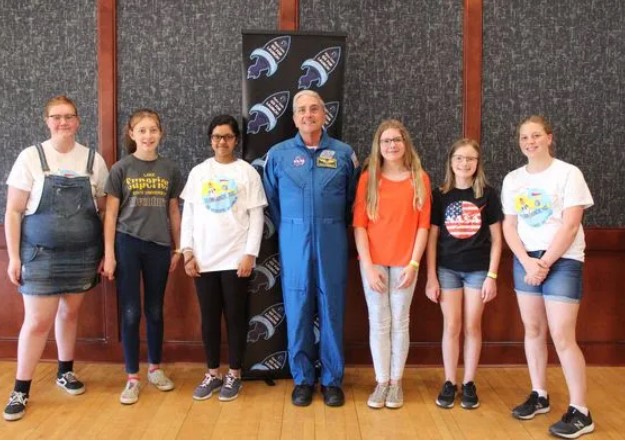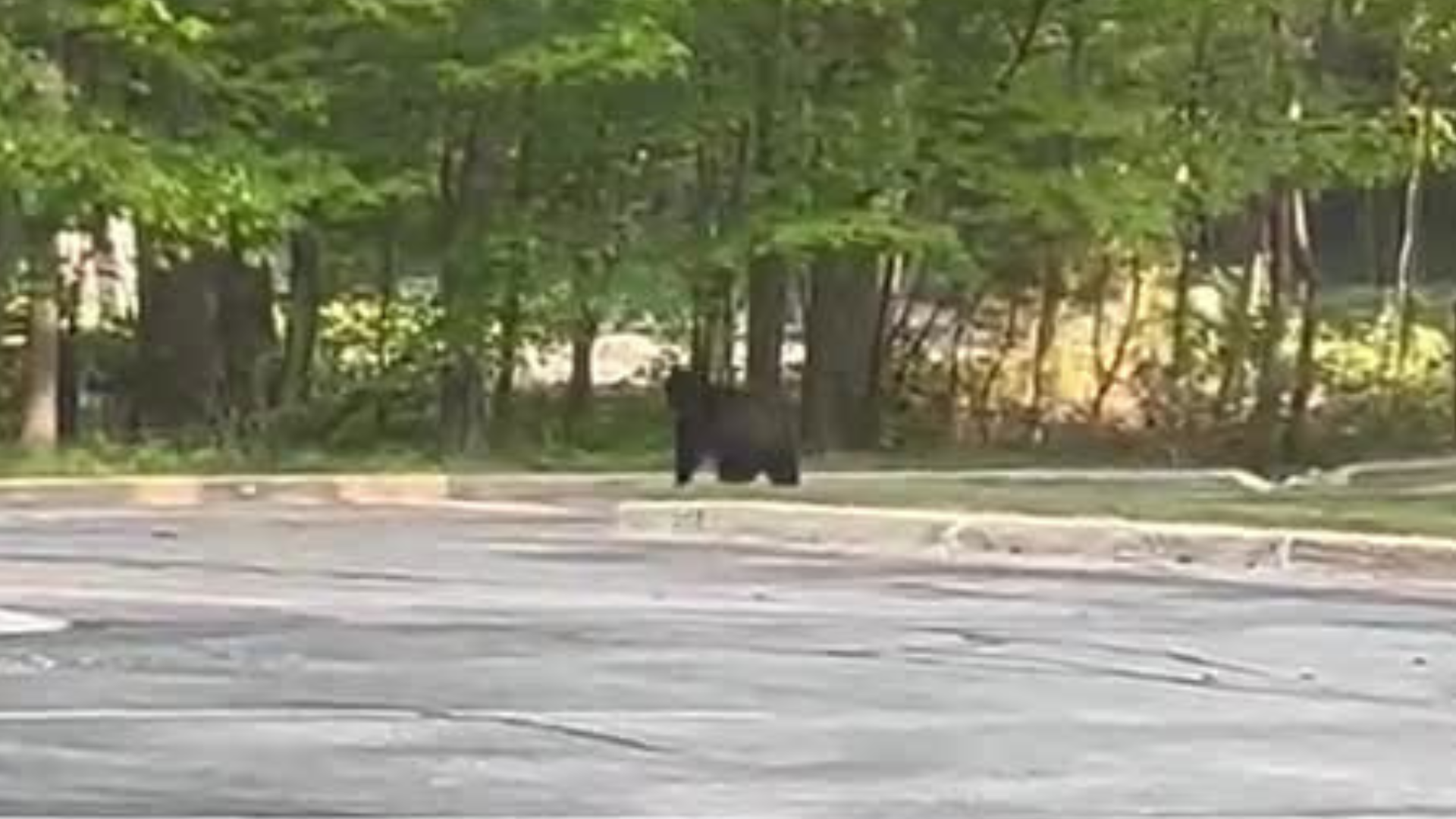Students from Sault Ste. Marie will see their science experiment soar into space this year.
Last summer, the nonprofit organization Higher Orbits hosted a camp called Go For Launch at Lake Superior State University. Space Shell6, a team of six middle and high-school students from Sault Ste. Marie, studied cellular respiration within Bermuda grass.
The team recently was announced as winner of the camp competition, and part of their prize is to have their experiment spend 30 days on the International Space Station.
Once their winning experiment is launched at the end of 2023, students will follow along with real-time results to monitor how their experiment stands up to life in space.
“I wasn’t sure if we were going to make it past the first competition, and now it’s going to space. It blows my mind still every single day; it’s unbelievable,” said team member Taylor Meilstrup, 14.
The experiment is scheduled to launch on a flight called Northrop Grumman, or NG20.
“It is a cargo resupply service flight to the International Space Station. It is currently targeting the fourth quarter of this year (for launch),” said Michelle Lucas, the founder and CEO of Higher Orbits Space Camp.
The Camp
Lucas worked at NASA’s Johnson Space Center in mission operations for the International Space Station for more than 11 years. After gaining experience in the industry, she wanted to give back and so created Higher Orbits to get kids more involved in STEM activities. The Go For Launch program is a three-day camp where students meet an astronaut and conceptualize an experiment for use in space.
“The first day of the camp was getting to know everybody, building teamwork and meeting the astronaut,” said team member Zahraa Mahmud, 14.
Working with the astronaut is one of the most impactful parts of the camp for students.
“It’s really powerful when you can spend real time with one of these humans who has had the privilege of being a professional astronaut. The astronaut serves as a mentor for the entire event. It’s a great way for the students to make that connection but also feel comfortable to ask all the questions they could possibly have,” Lucas said.
The Experiment
The second day of camp, students start brainstorming what their project will look like. SpaceShell6 decided to focus on growing cellular respiration. Cellular respiration is the process by which organisms combine oxygen with foodstuff molecules, diverting the chemical energy in these substances into life-sustaining activities and discarding as waste products carbon dioxide and water.
The students examined cellular respiration yeast, or C.R.Y. Typically, this cell model is used to study growth and regulation. The processes occurring in the yeast cells are similar to what would be going on in a human or animal cell. The requirements of the camp prohibited the use a vertebrae for the study, so the yeast cell model was chosen because it’s a single cell. The yeast doesn’t have a vertebrae and is easy to grow.
“We knew that we didn’t want to send any animals up in the space because that’s mean. But we still wanted to measure how life reacts in space,” said team member Siri Olson, 13. “We want to see if they can grow or if they die to measure how much grass only supports life.”
Zahraa added, “Our project focuses on growing cellular respiration using C.R.Y. in space. We have C.R.Y. in different amounts, similar to different amounts found in life. To do that, we need to provide oxygen for it, which is why we chose Bermuda grass. Since it only gets 30 days in space, Bermuda grass grows the fastest. So we decided to have that.”
On the final day of camp, the students presented their conceptualized experiment in a presentation for the camp judges.
“Our job as students there was just to design an experiment. When the time comes for it to be launched, NASA will put it all together,” said team member Evelyn Weber, 14.
Throughout the process, the students said that teamwork was at the heart of their effort.
“We didn’t really have any roles for any specific person. We just work together,” said Claire Parks, 12.
Though the team had varying levels of interest and experience in STEM, all of them echoed the value of the experience and the impact of accomplishing the goal as a team.
“This camp was an amazing experience. And for anyone reading this, we want young people to participate in this camp or STEM camps near them. It’s really fun, and I highly recommend it. Even if you don’t really like STEM. There are always surprises along the way,” Evelyn said.
The team members had fun and were pleasantly surprised, too.
“At the beginning, I thought we were going to fail. I also didn’t really understand much of what we were doing. When we won, I was in shock than happy because I didn’t expect it to win. I was pretty excited when we found out,” said team member Cierra.
Other Experiments at the International Space Station
Past experiments have been sent to the space station, thanks to the roughly 60 sessions of the Go For Launch camps conducted across the country.
“We’ve had a wide variety of experiments that have found the space station. We had bees fly to the International Space Station with a team from Illinois. They looked at how bees would behave in microgravity if they had never experienced gravity before,” Lucas explained.
“Of the five bees sent, only one emerged. It was very interesting to watch the bee, because it very pretty quickly learns that its wings are useless, because there’s no air to push against. It adapts fairly quickly to jumping around as opposed to flapping its wings. That experiment was flown in 2018. The students are still looking at ways they may be able to do this again,” she added.
The camps offered by Higher Orbits are one step in addressing what Lucas describes as a massive shortage of STEM majors and STEM graduates. In this United States, it’s predicted millions of jobs will go unfilled because of the lack of STEM graduates.
“I am a big believer in what Sally Wright said: ‘You can’t be what you don’t see.’ We work hard to make sure that students have different people in front of them that represent a variety of things that help them perhaps see something of themselves in the speaker,” Lucas said.
Another goal of Higher Orbits is to see different groups represented in STEM, including women and minorities.
“Women are actually more representative than other minority groups. But it’s really exciting to see just how many girls are interested; this team is a great example of that,” Lucas said.
Beyond what people typically think of STEM, Lucas said opportunities are abundant and dynamic. Careers are available in a variety of pathways beyond the traditional model of scientist or engineer.
“I think that there are so many options and opportunities in STEM beyond what people think of the traditional pathway. But there’s a thing for everyone who wants to be involved in STEM, it is no longer just an engineer, or just a hardcore scientist. You just have to be willing to be open to opportunities, and that’s one of the things we try and show students,” Lucas said.



